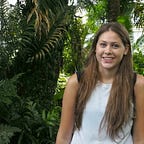Poster Process
Starting with the idea of our visual language we began thinking about a pattern of disorganized to organized could create an engaging poster format. We started by creating and testing out different patterns and shapes.
We were interested in thinking about the scale of the circles, whether they should be super large and bleeding off the page, or smaller and showing a clear pattern from top to bottom. We also trie different shapes bother together and alone. Through this process we found that the pattern was more successful when it wasn’t taking over the entire page. We also found that we were facing some problems with contrast between the color of the shapes and the color of the text.
We decided to choose this bright orange color because we are interested in creating something that is playful and intriguing. We wanted to keep from picking any colors that were too “educational” as we want people to associate time management with not only school work, but with all aspects of life as well.
Moving forward and after talking to our peers and professors, we started to think on the more large scale of each poster as a series. We thought about creating distinction through different shapes moving from being disorganized to organized. This proved to be hard because each shape’s side had a different effect when tilted and disorganized.
We also began to realize how our content’s hierarchy was off. We put all of our efforts into making the title of the poster the main piece, but disregarded the importance of the catch. With this in mind, we had to start thinking about how the catch could be incorporated in a meaningful way.
How can these different pieces of content work together and not against each other? Scale, color, and text can all create a distinction.
At this point, we took a step back and looked at the pattern, text hierarchy, and content from different distances. With the constraints we found working with different shapes that are drastically different on different rotations, we realized that perhaps creating a constant through circles is good.
We also took another look at our type choices. We decided to switch our main typeface use from Adelle Sans to Calluna Sans. We are still unsure whether this is the best fit, but we were happy with how this typeface is still fun, but also standard. The x-height also seems to fit better than Adelle Sans. Adelle Sans being a font only available in 2 weights was also a constraint that we did not want to put on ourselves.
While we have now come closer to nailing down a pattern that accurately shows disorganized to organized, we are having issues incorporating that pattern to the rest of the content. While we want the circles to pop, it is creating contrast problems.
Some questions we’ve been thinking about is, how are the circles overlapping with the text helping or hurting the flow? How is the color creating hierarchy in a good or bad way? Is the scale of the circle s and the text competing with each other? How can we make it readable, but still playful?
After getting some feedback on our progress, we are thinking more about how we can use more concrete grid systems to form a better display disorganized to organized. Can the circles sit on a grid while still showing disorganized? As we revisited the original graphic form ideas we had, we also discovered that our ideas about hand-lettering had gone to the wayside. Thus, we decided to incorporate hand-lettering in some way to make it more playful and add a “personal” touch.
Below are some explorations we made with hand-lettering.
It has taken some time and deliberation to think about what hand-lettering style would work with our current graphic form, or if hand-lettering is appropriate at all.
How can we incorporate this style thoughtfully. Perhaps if we are going to use hand-lettering, we can use other drawn elements to tie it all together. The other option might be to use a way to make it even more distinct.
— (PHOTO_
After printing out our poster large scale, we are finding that it is very boring, for lack of a better word. The colors and flatness of the shapes are not creating an exciting experience. We are now going to go back to the drawing board and think more about how we might be more intentional with type, texture, and color to create more depth in the poster. We are also seeing that the pattern use is getting too disorganized at times. How can we create an ordered disorder? We are going to try and add more of a grid structure into the poster.
Printing out the large poster has also got me thinking about the choices behind the color and pattern. Why does it make sense to use orange for the circles? What makes the pattern successful or not successful? I think that answering these questions might help us move forward in a more directed way.
Re-thinking Typefaces
With all the rounded aspects of our poster and graphic form, I began to think more about why we initially chose Calluna Sans as our primary typeface. There wasn’t a completely logical reason why we chose it, besides that it looked “good” in the instance in which we were testing out different typefaces. Thus, I started to look back and think more about typefaces and whether that might be a reason I have been struggling to get the poster to work. With our circular graphic form, I looked into more rounded sans serif typefaces. I am hesitant to change the typeface so late in the game, but if it works better then we should not be constricted because of time.
